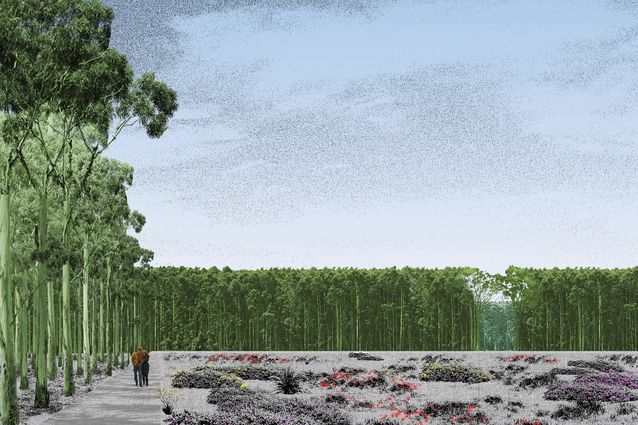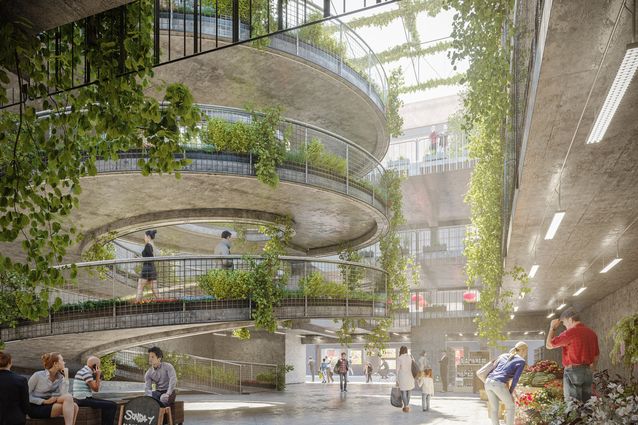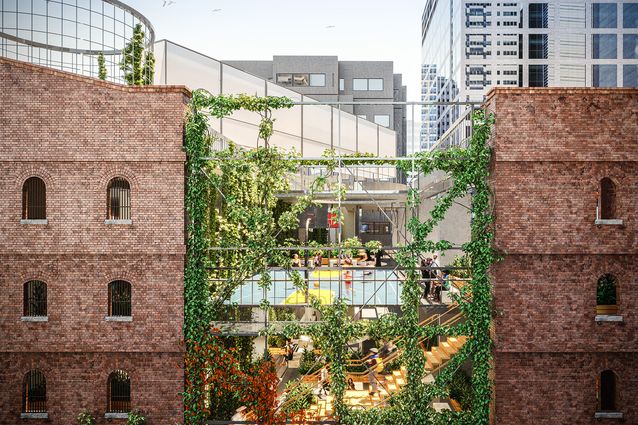[ad_1]
Jury citation
Burial Belt proposes an imaginative solution to the urgent shortage of burial space in Australian cities. It envisions a continuous band of forest ringing Western Sydney, developed over time by “planting” burial plots along with native vegetation. This forest becomes a lever to address a number of adjacent issues of the city: urban sprawl, density, and care for the natural environment. The burial sites form a covenant in perpetuity, protecting the forest from future development.
Burial Belt gives a massive physical presence to the urban growth boundaries that otherwise exist only in policy documents, an intangibility that allows them to be easily ignored. The images of the project are deceptively gentle – who could disagree with a beautiful forest ringing Sydney? But underneath, this vision packs a critical punch. By laying down the dead in the path of unsustainable urban sprawl, it poses the question: What would it take for us to rethink such wasteful use of land?
Burial Belt also proposes a new cultural attitude to death. The designers write, “Let us reimagine how we dispose of our dead not as an end in itself, but as a reaffirmation of our place within a finite ecology shared by all living things.”
In the spirit of great unbuilt projects, Burial Belt uses imaginative speculation to draw attention to the very real challenges facing our cities today.
Burial Belt by Other Architects.
Architect’s description
Burial Belt rethinks the environmental impact, logistics and experience of burial. Responding to dwindling reserves of urban cemetery space and rampant deforestation, this project envisions the gradual acquisition and transformation of sparse grazing land on the city fringe to create beautiful landscapes for natural burial.
In this proposal, burial plots are “planted” in the earth along with native vegetation, allowing reforestation to occur, with animals and insects gradually reoccupying the area. Cemetery sites are managed like natural parkland, complete with low-impact walkways, with timber periodically harvested to capture atmospheric carbon and create space for clearings.
Over a short span of time, burial spaces would be subsumed by forest. Eventually, individual cemetery sites could join together as a continuous green “belt,” linking areas of remnant habitat and constraining urban and industrial sprawl. While those interred in this progressive model of burial ground would have no lasting monuments and would slowly decompose into the soil, leaving little trace behind, burial spaces would be protected in perpetuity, providing a permanent covenant over the land that preserves the forest for eternity.
Cremation accounts for more than two-thirds of all Australian interments. Often misunderstood as an environmentally-friendly process, every cremation requires the energy equivalent of 40 litres of petrol, while emitting concentrated pollutants like mercury and dioxin. Dispensing with headstones, hardscaping, coffins and preservatives, natural burial minimizes ecological disturbance, with plants and wildlife supplanting the dense rows of graves found in traditional cemeteries.
Burial Belt is a big-picture idea for simultaneously addressing burial space shortages, providing a replacement land use for carbon-intensive livestock grazing, reversing deforestation, filtering emissions, introducing an affordable ecological alternative to cremation, limiting urban sprawl, and improving the enjoyment of burial spaces for all by offering green, vibrant, majestic and calm landscapes that grow and change over time.
[ad_2]
Source link












